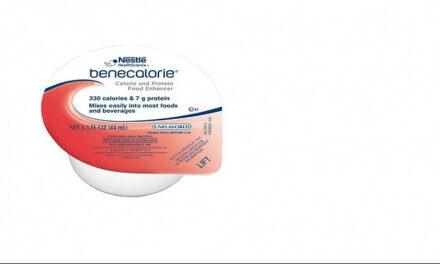Here, we will be exploring all the trendy salt types to confirm how each might affect diabetes management and its symptoms. The ultimate goal of this Comprehensive Guide is to answer the commonly asked question – What Is The Best Salt For Diabetics?
Diabetes affects millions around the world and is characterized by high blood sugar levels, hormonal imbalance, and ineffective insulin production. Living with the condition can be a challenge if you don’t have a proper diet plan. Diet plays a fundamental role in managing blood sugar levels, and choosing the right ingredients becomes important.
While it can seem like a lot of work, it is manageable with the help of some expert advice. Sugar is a well-known concern; however, the role of salt in the diet is often left unexplored.
Our expert team have collected data from various medically-approved journals and resources to help you learn which salt is best for your body.
First, let’s explore the widely known types of salts from across the globe.
Types Of Salts
1. Himalayan Pink Salt
Derived from the sea salt deposits in the Himalayan Mountains, it is rich in minerals and trace elements. The main constituents are magnesium, potassium, and calcium. These minerals can provide additional health benefits for individuals with diabetes, as they are essential for maintaining normal bodily functions.
According to scientific evidence, the mineral composition in Himalayan Salt can help in liver bile production and easier digestion. The Himalayan Salt could also act as a blood thinner, ultimately reducing blood pressure.
According to experts, the recommended daily intake of salt for people with high blood pressure is 3.75 grams/day.
The pink hue of this salt is attributed to the presence of iron oxide, which further adds to its mineral profile. While the specific effects on diabetes management require further research, the inclusion of additional minerals in Himalayan pink salt can contribute to overall health and well-being.
2. Sea Salt
Sea salt is produced after the evaporation of seawater. It usually contains a large amount of various minerals, mainly potassium, magnesium, and calcium. It is often less processed than table salt, making it a popular alternative for health-conscious individuals.
However, in terms of sodium content, it is not much different than the widely used table salt. While sea salt does offer some additional minerals, it is important to note that the amounts are relatively small. Therefore, its impact on overall health may not be significant.
Nevertheless, some individuals may prefer sea salt as a more natural option due to its less refined nature.
Types of popular sea salts are: Table Salt, Celtic Sea Salt, Cornish Sea Salt, Dead Sea Salt, French Grey Sea Salt and Hawaiian Salt.
3. Low-Sodium Salt (Potassium Salt)
For individuals with diabetes who need to manage their sodium intake actively, low-sodium salt can be an excellent choice. Made by replacing some of the sodium chloride with potassium chloride, it is suitable for those with high blood pressure or fluid retention issues.
However, it’s worth noting that individuals taking medications or those with kidney disease should consult a specialist as it can affect the body’s potassium levels.
4. Chinen Salt
Chinen salt is not an alternative to regular table salt as it is not commonly used in food. However, it has been used in Traditional Chinese Medicine for alleviating diabetic symptoms.
Derived from the plant Coptis chinenis, it looks similar to the Himalayan Pink Salt. In some countries, Chinen Salt is considered Berberine, while in others, it’s Himalayan Salt.
Scientific literature say its active compound, Berberine, helps reduce elevated blood sugar levels.
How Your Body Absorbs Salts – Are You Salt Sensitive?
Our medical experts believe, the body’s blood pressure response to changes in salt intake is not the same for everyone. There are people who get high blood pressure due to a salt intake increase and a decrease in blood pressure due to a decrease in salt intake. This is called being Salt Sensitive.
However, there are people who do not experience a significant change in their blood pressure with regard to salt intake; hence, they are called Salt-resistant.
There is no specific threshold yet, and before we get to the importance of salt in the diet, you need to know whether you are salt-sensitive or not.
One of the ways to measure this is by switching to a low-sodium diet for 2 weeks. Throughout the two weeks, monitor your systolic blood pressure levels. If you experience a change of more than 5 points, it would be considered salt-sensitive.
With that in mind, now let’s turn into the relationship of salt with diabetes…
Understanding Diabetes And Sodium Intake
Before delving into the specifics of salt choices, it is essential to grasp the relationship between diabetes and sodium intake. While salt itself does not directly affect blood glucose levels, excessive consumption of sodium can have an indirect impact on diabetes management.
High sodium can lead to high blood pressure, which can elevate the risk of heart disease and stroke, two common complications of diabetes. However, it’s important to note that not all types of salt are created equal.
Importance of Salt
Salt is a crucial component of our diet. One of its essential minerals, sodium, plays a vital role in regulating the body’s fluid balance, blood pressure and transmitting nerve impulses. It also helps keep you hydrated, which is a common issue faced by people with type 2 diabetes.
According to the National Library of Medicine, the recommended sodium intake for an adult is no more than 2300 mg daily. This amount is recommended for a regular person.
For diabetics, limiting their sodium intake to 1500mg per day is recommended.
People on a Keto diet or intermittent fasting sometimes go lenient on their salt intake. However, while this can cause high blood pressure, these two things are often correlated, and salt may not always be causative.
Characteristics Of An Ideal Salt For Diabetics
When considering the characteristics of an ideal salt for diabetics, several factors should be taken into account.
Here are some key characteristics to look for:
1. Lower Sodium Content
One of the primary concerns for individuals with diabetes is reducing their sodium intake.
The American Diabetes Association recommends that people with diabetes consume no more than 2,300 milligrams of sodium in mineral form per day. Therefore, an ideal salt for diabetics should contain less than this amount of sodium per serving.
2. High Potassium Content
Potassium is an essential mineral that helps regulate blood pressure and supports overall health. It is found in many foods, such as fruits, vegetables, and dairy products. Therefore, an ideal salt for diabetics should contain significant potassium.
3. Mineral Composition
A good mineral composition is a plus in an ideal salt for diabetics.
Look for essential minerals like potassium, magnesium, and calcium. These minerals play a vital role in maintaining overall health and supporting normal bodily functions. These minerals are important for maintaining good health and can help offset some of the negative effects of sodium.
4. Minimal Processing
Highly processed salts are often packed with additives and flavoring agents that may not be beneficial for individuals with diabetes. Opt for salts that are minimally processed and do not contain unnecessary additives.
Less processed salts tend to retain a higher mineral content.
You can find salts that have a balanced and satisfying taste profile to ensure that meals remain enjoyable and satisfying. Salts obtained from natural sources like Black Salt are a good option.
5. Compatibility With Dietary Restrictions
If you have additional dietary restrictions requiring potassium monitoring, the salt should be chosen accordingly. You may need to consult a registered dietitian to find suitable salt options.
It’s important to note that while the choice of salt can contribute to a healthier diet, it is just one aspect of overall diabetes management. Monitoring blood sugar levels, maintaining a balanced diet, engaging in regular physical activity, and following medical advice are all crucial components of effective diabetes management.
Always consult with a healthcare professional or registered dietitian for personalized guidance based on individual health conditions and dietary needs.
In conclusion, an ideal salt for diabetics should have low sodium, high potassium, and other essential minerals, be naturally sourced with minimal processing, and be safe for consumption. So, with that understanding, what is actually the best salt for people with diabetes?
What Is The Best Salt For Diabetics?
Considering the above requirements, some of the select salt options are listed below. There are many low-sodium salt options available on the market today.
|
Salt |
Sodium Content |
Minerals |
Remarks |
|
Chinen Salt |
Low – In the form of Sodium Chloride and Sodium Nitrate |
Nitrates Chloride |
|
|
Himalayan Salt |
In the form of Sodium Carbonate |
Magnesium Potassium Calcium |
|
|
Sea Salt |
High |
Magnesium Potassium Calcium in trace amounts |
|
|
Morton Lite Salt |
Low |
Potassium |
|
|
Low-Sodium Salt (Potassium Salt) |
Low |
Potassium Chloride |
|
Remember that while choosing the right salt is important, focusing on overall dietary patterns and considering portion sizes is essential. We recommend consulting a healthcare professional for any specific dietary restrictions or health conditions.
Other Salt Types And Alternatives
Here is the list of alternatives is below. Note that some of the below salts are types of sea salts.
- Bamboo Salt
- Celtic Sea Salts
- Chicken Salt
- Cornish Sea Salt
- Dead Sea Salt
- Epsom Salt
- French Grey Sea Salt
- Garlic Salt
- Hawaiian Salt
- Kosher Salts
- Red Salt
- Redmond Real Salt
- Smoked Salt
Conclusion
When managing diabetes, a holistic approach to nutrition is essential. While salt does not directly affect blood glucose levels, choosing the right type of salt is important to support overall health and minimize potential complications.
Chinen Salt, Black salt, Sea salt, Potassium salt, and Morton Lite Salt are great alternatives to traditional table salt. Our article also notes specific types of sea salts and other salt alternatives too.
Remember, moderation is key. Working closely with a healthcare professional or registered dietitian is crucial to determine the appropriate amount of salt for your individual needs. By making informed choices and being mindful of sodium intake, individuals with diabetes can maintain a balanced diet and promote better overall health.
Incorporating healthier salt alternatives can reduce sodium intake and add flavor and variety to your meals. However, it is important to remember that the key to a healthy diet for individuals with diabetes lies in a balanced selection of nutrient-dense foods.








